
In this post, we focus on Japanese design by taking a closer look at the design of Japanese municipal flags.
These flags feature highly stylized bicolor geometric symbols, often incorporating Japanese or Latin characters, making them especially interesting from a designer's perspective.
The symbols that are featured are representative of the foundation on which the municipality is built.
We've put together a compilation of 100 Japanese municipal flags which we thought were the most graphically appealing, especially to those with an interest in logo or Japanese design.
Here's an explanation of some of the Japanese words that appear in this article:
Hiragana/Katakana: a Japanese syllabary, which is a component of the Japanese writing system.
Kanji: the Chinese characters that are used in the Japanese logographic writing system.
Ume: Plum.
Origami: Folded Paper.
Tomoe: Japanese abstract shape that resembles a comma.
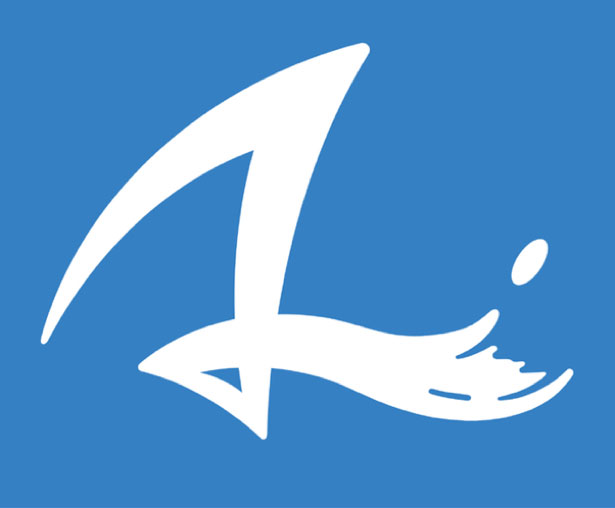
Aioi, Hyogo. The A in this flag represents a boat and ocean waves.
Azumino, Nagano. This flag consists of a stylized kanji.
Biratori, Hokkaido. The three stars are replicas of the stars that form Big Dipper.
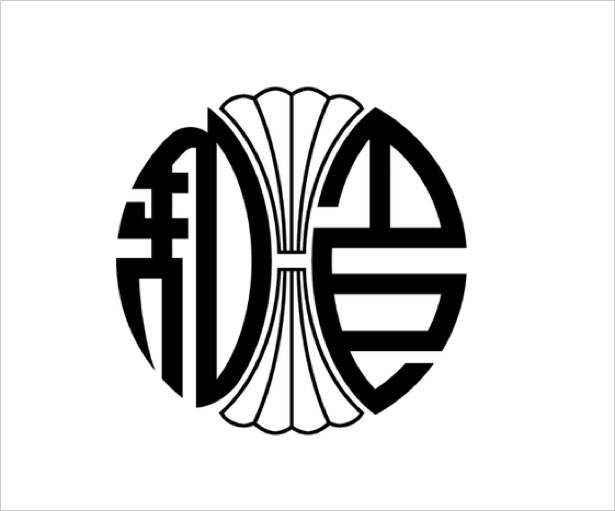
China, Kagoshima. This flag features a stylized kanji with Erabuyuri, lilies local to the island.
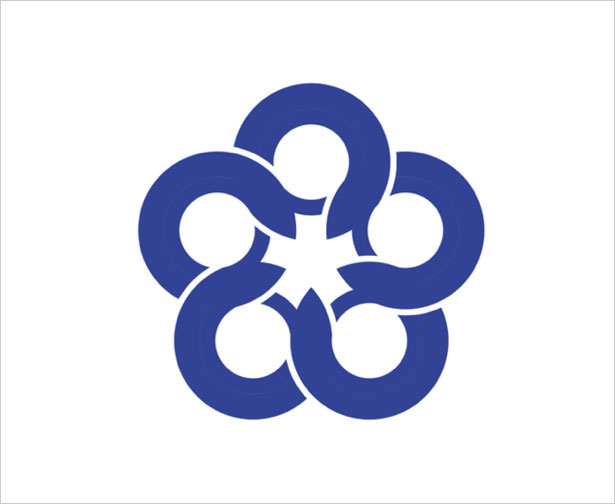
Dazaifu, Fukuoka. This flag features an ume with a stylized kanji.
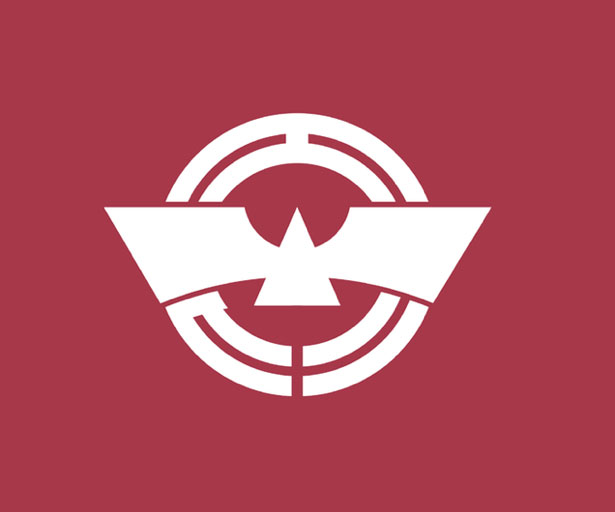
Ebina, Kanagawa. This flag features a stylized katakana.
Esashi, Hokkaido. This flag features a katakana surrounded by four stylized katakanas.
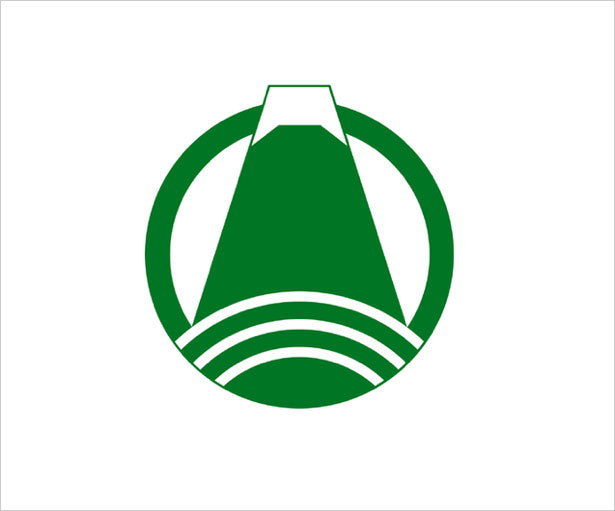
Fuji, Shizuoka. This flag symbolizes Mount Fuji, with the three lines representing the three municipalities that merged in 1966 to form the current city.

Fujimino, Saitama. This flag contains a stylized version of the letter 'F'.
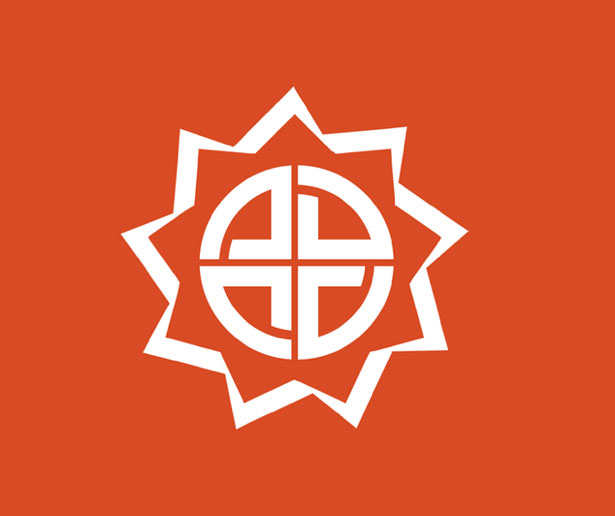
Fukushima, Fukushima. The nine katakana on the outside of the symbol and the four katakana in the inside make the rebus of Fukushima.

Fukuyama, Hiroshima. This flag symbolizes a bat.

Ginowan, Okinawa. The katakana in this flag represents wings over a bay.
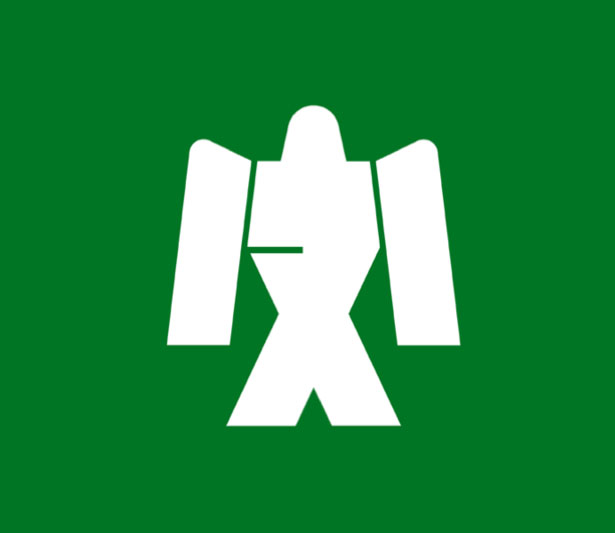
Hachijo, Tokyo. The kanji in this flag symbolizes eternal peace and endless progress, qualities that Hachijo hopes to adopt.

Hachinohe, Aomori.This flag represents a crane.

Hagi, Yamaguchi. The grid pattern in this flag is used on the walls of the Hagi castle.
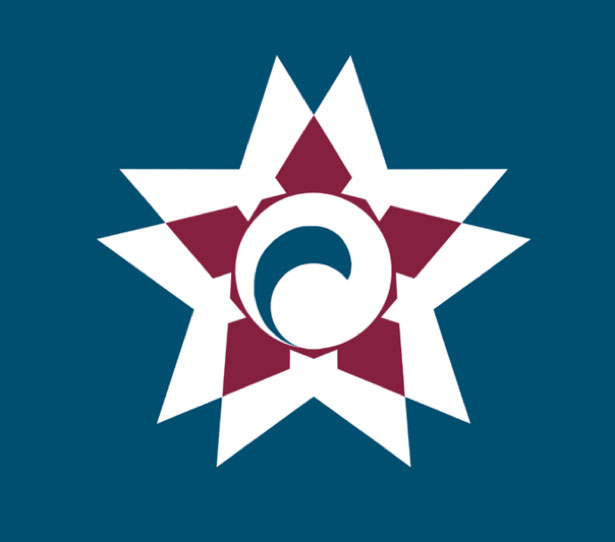
Hakodate, Hokkaido. The inside of this five-pointed star is the single tomoe which represents the map of the peninsula.
Hakusan, Ishikawa. This flag shows Mount Hakusan with the Tedori River and the Sea of Japan.
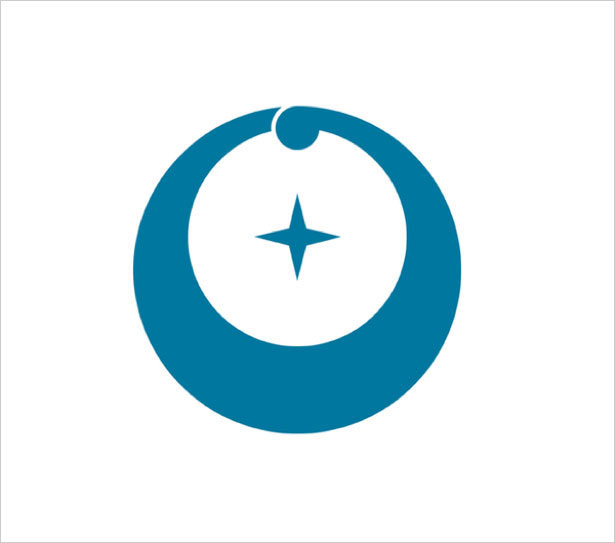
Hamada, Shimane. This flag features a stylized kanji which symbolizes ocean waves, representing a beach.
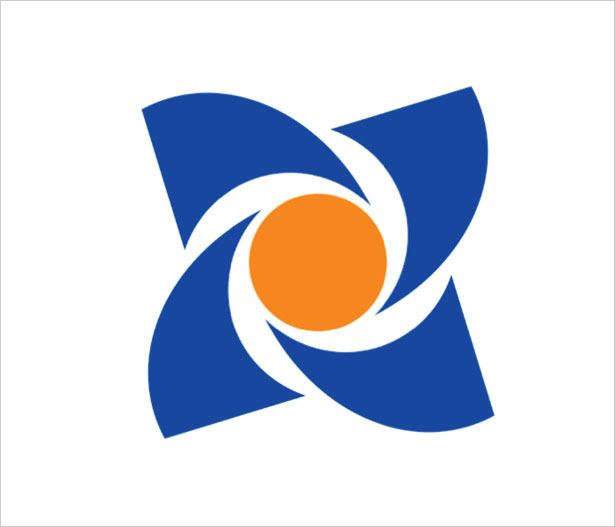
Hanamaki, Iwate. The four petals represent the four municipalities that merged in 2006 to form the current city.

Hirakata, Osaka. This flag symbolizes the image of a bird flapping its wings in the sky.

Hitoyoshi, Kumamoto. The katakana in this flag represents a bird.
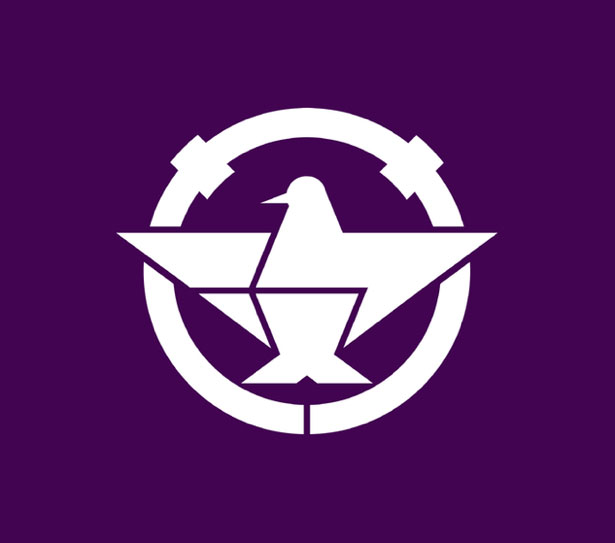
Ibaraki, Osaka. The kanji in this flag represents a pigeon.
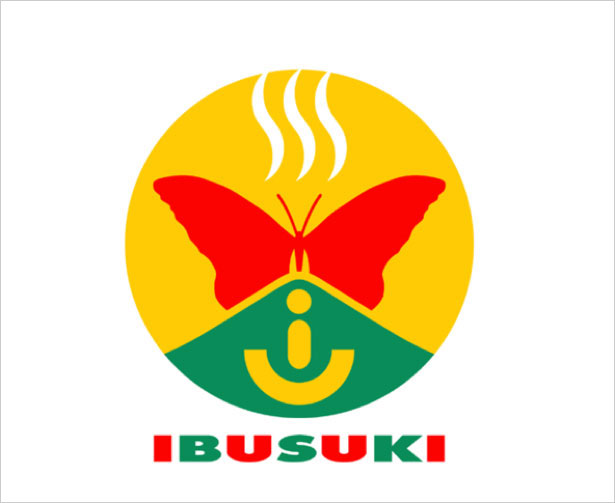
Ibusuki, Kagoshima. The three lines represent a map symbol of hot spring, as well as the three municipalities that merged in 2006 to form the current city. The letters 'I' and 'U' represent the city name.
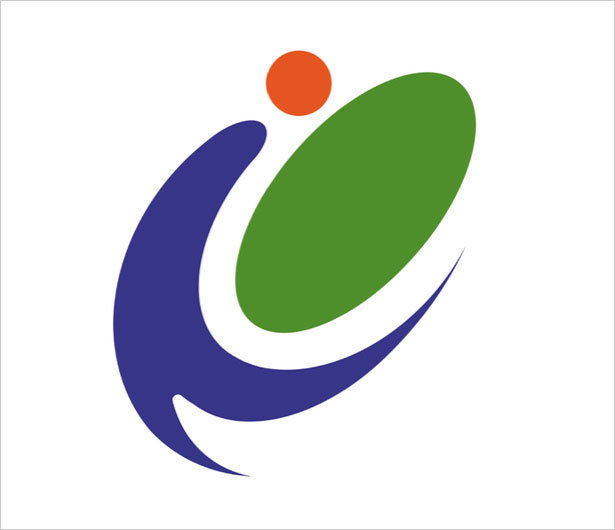
s
Iki, Nagasaki. This features a stylized version of the letter 'i'.
Imabari, Ehime. This flag features the letter 'i', which represents the Inland Sea and the bridge over the Kurushima Strait.

Imizu, Toyama. This flag sports the hiragana that represents the Sea of Japan.
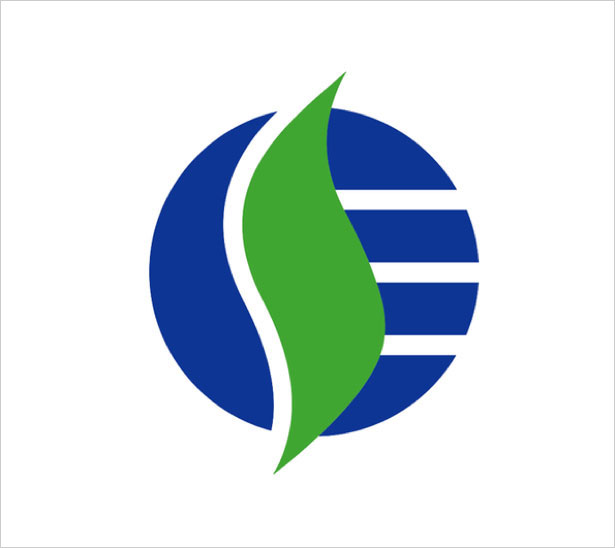
Ise, Mie. This flag symbolizes the letters: ISE.
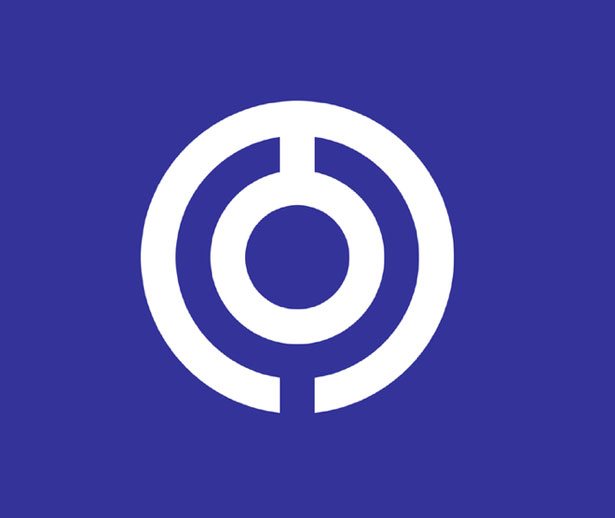
Ishigaki, Okinawa. This emblem features a stylized kanji.

Ishinomaki, Miyagi. This flag features a stylized kanji.

Itami, Hyogo. The kanji symbolizes a swan of the Koya Pond.

Itoigawa, Niigata. This flag comprises of a stylized kanji.

Iwakuni, Yamaguchi. The petals of sakura in this flag represent the arches of the Kintai Bridge.
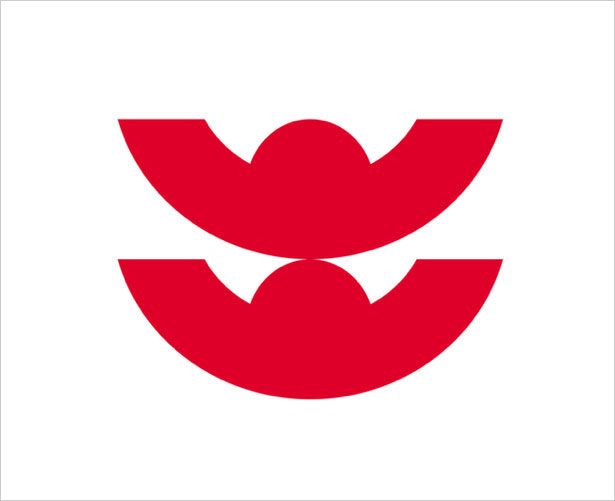
Izumo, Shimane. The flag features a stylized kanji.

Kagoshima, Kagoshima. The foreground of this flag is a kanji based on the symbol of a popular Japanese clan, while the background is Sakurajima, an active composite volcano.
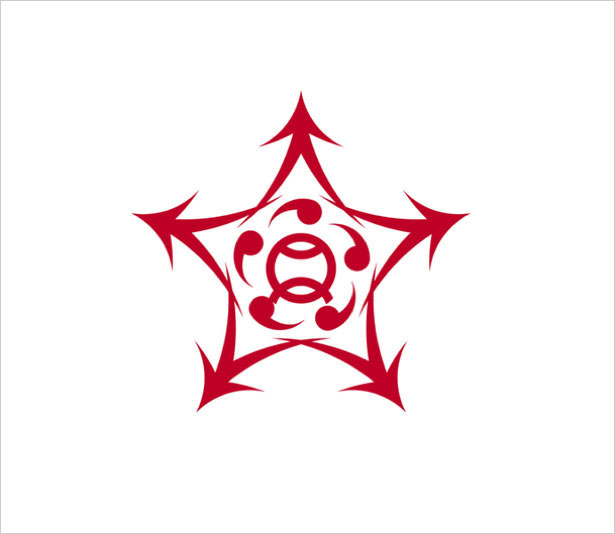
Kaizuka, Osaka. The five prongs represent five pine leaves that surround the waves of Osaka Bay and the kanji.
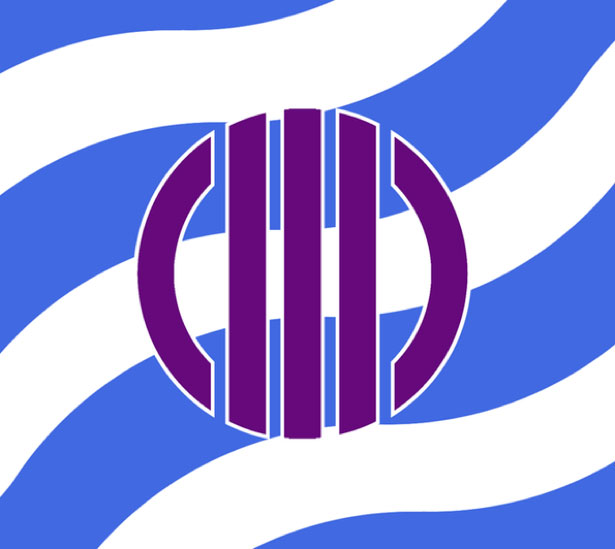
Kakogawa, Hyogo. This flag represents the Kakogawa River.
Kamagaya, Chiba. The flag contains a stylized katakana.

Kamakura, Kanagawa. This flag represents bamboo leaves and a gentian, originally used as the symbol of a prominent Japanese clan.

Kanazawa, Ishikawa. This flag consists of a stylized kanji, the outline of ume and a symbol from a notorious Japanese clan.
Kanoya, Kagoshima. The blue shape in this flag represents the Osumi peninsula and the red circle with the gold katakana represents the city.

Karuizawa, Nagano. The hiragana in this flag symbolizes a flying bird.
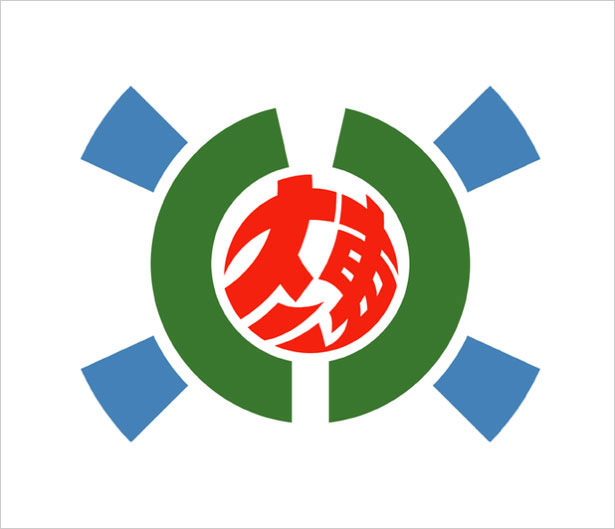
Kitadaito, Okinawa. The flag of Kitadaito is comprised of a stylized kanji.
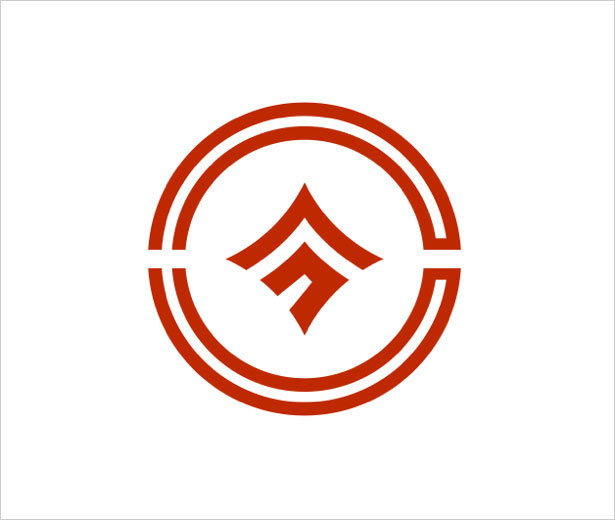
Kokubunji, Tokyo. The katakana forming the circle expresses harmonious unity and the kanji in the center symbolizes the city's name.

Kozushima, Tokyo. The hiragana in this flag, represents the Izu Islands and the flow of the Kuroshio Current.
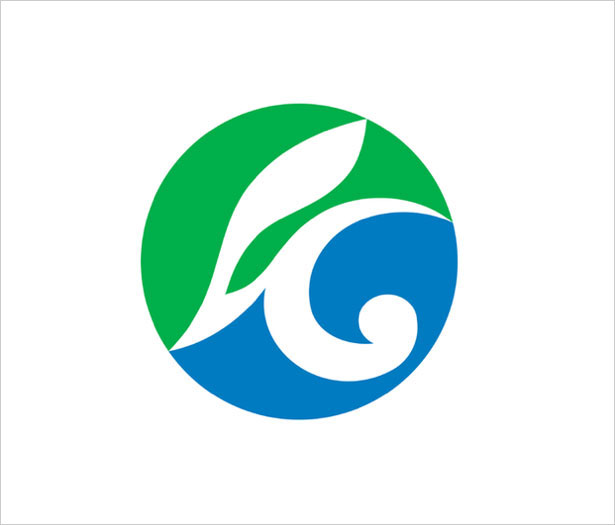
Kuji, Iwate. This flag is a stylized form of the letter 'K'.
Kumamoto, Kumamoto. This flag is a stylized version of a hiragana.
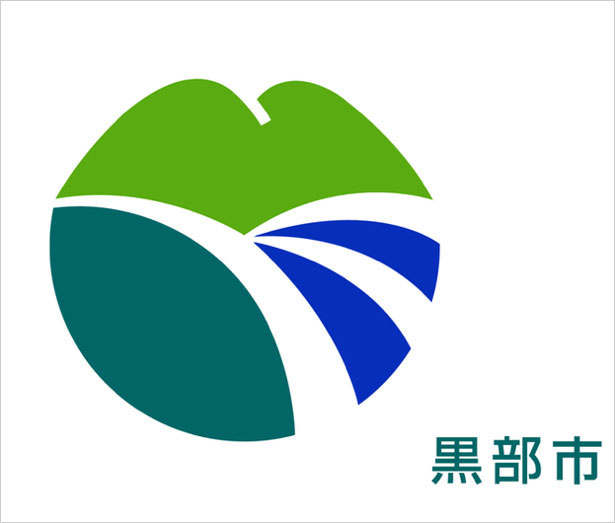
Kurobe, Toyama. This flag is also a stylized version of the letter 'K'.

Kurume, Fukuoka. The flag of Kurume features nine katakana that surround a stylized kanji.
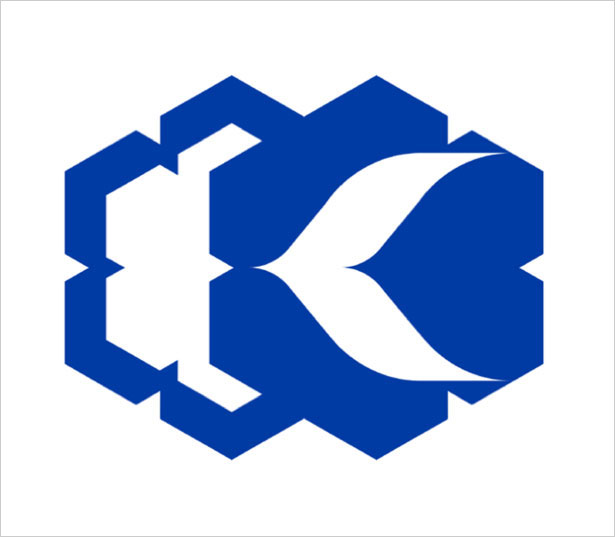
Kutchan, Hokkaido. This flag consists of the stylized letter 'K', representing snowflakes and flying birds.
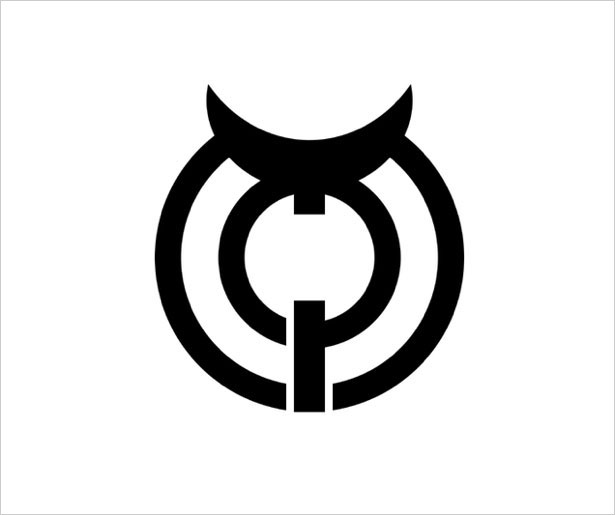
Makurazaki, Kagoshima. The katakana in this flag, and the letter M, symbolize a caudal fin of the skipjack tuna.

Matsumoto, Nagano. The circle represents a pine, and the inside is a stylized kanji.

Matsuyama, Ehime. This is the stylized version of a kanji.

Minamidaito, Okinawa. The flag of Minamidaito consists of a stylized katakana and kanji.
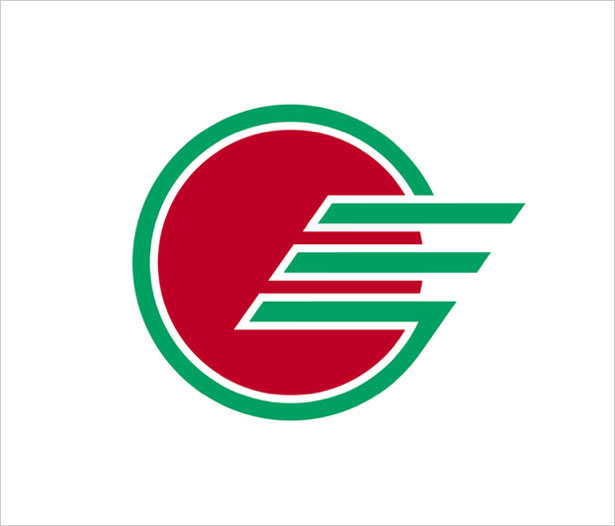
Mishima, Kagoshima. The flag features a stylized kanji.

Miyakonojo, Miyazaki. The three arrows represents a stylized kanji.

Muroran, Hokkaido. The outside of the symbol are six stylized katakanas and the inside is an orchid.

Nagaoka, Niigata. The shape of the blue noble phoenix in this ceremonial flag represents the city Nagaoka.
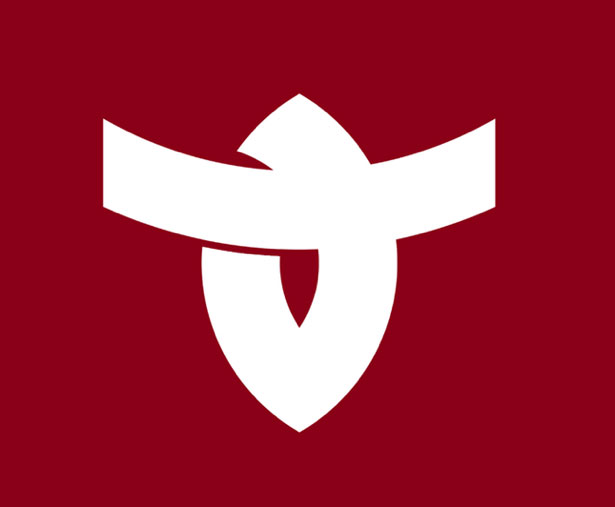
Nankoku, Kochi. The katakana in this flag symbolizes wings.

Nara, Nara. This flag represents a stylized kanji inside a sakura.
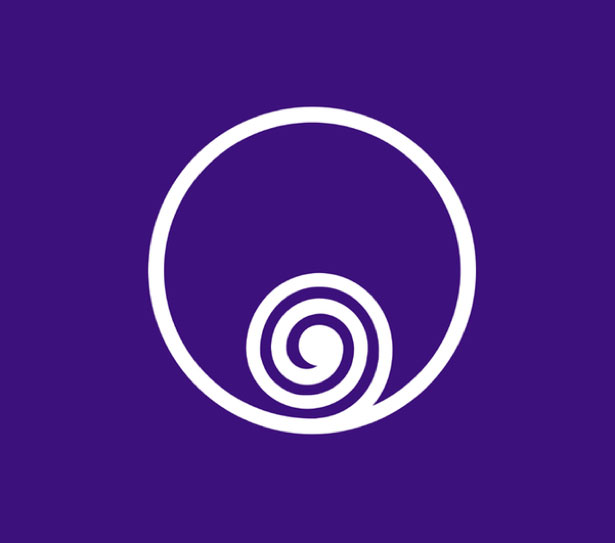
Naruto, Tokushima. The symbol in this flag represents the Naruto whirlpool.

Nikko, Tochigi. This flag contains five letter 'N's representing the five municipalities that merged in 2006 to form the current city.
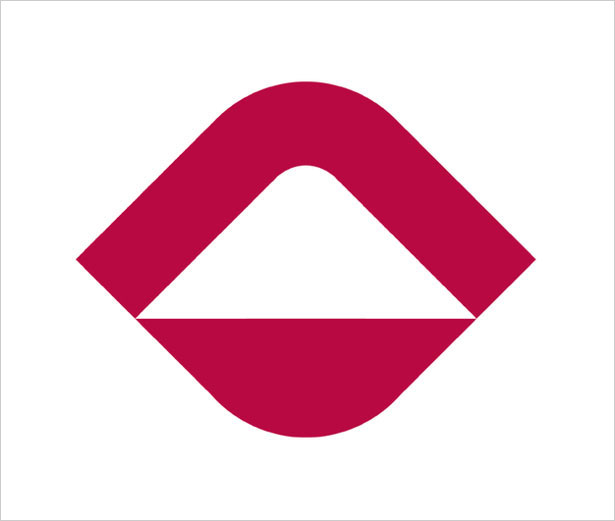
Ninohe, Iwate. This flag features a stylized katakana.

Noshiro, Akita. The hiragana in this flag represents the Sea of Japan and Shirakami Mountains.

Obama, Fukui. The kanji in this flag represents wings.
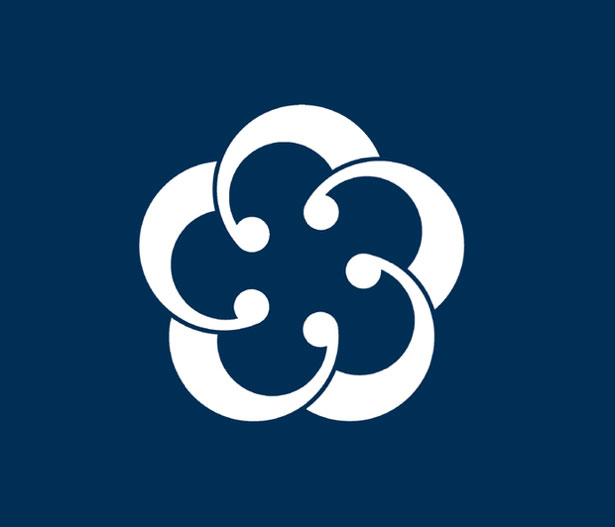
Odawara, Kanagawa. This flag represents ocean waves and ume, the city's flower.
Ogasawara, Tokyo. In this flag the disk represents the sun, harmony and progress, and the three birds within the disk stand for the peace and friendship of the islanders.
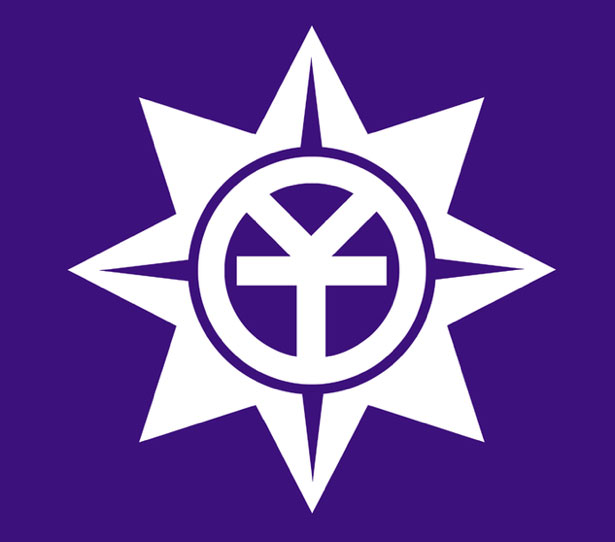
Okayama, Okayama. The symbol in this flag represents mountains.
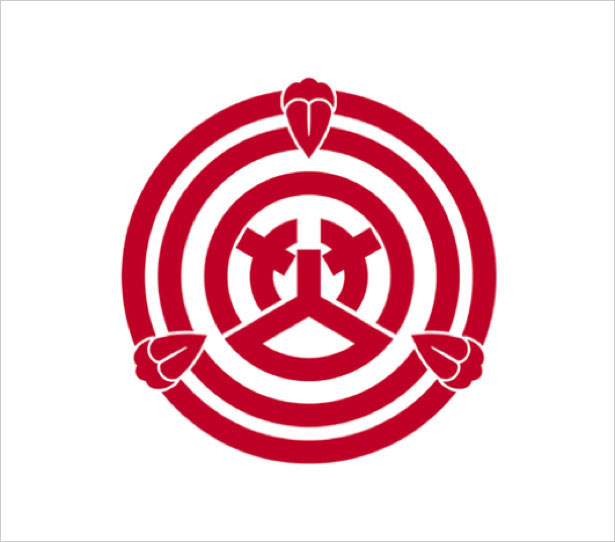
Okazaki, Aichi. In this flag, the kanji is in the center and in the outer parts there are a dragon's claws holding a sacred gem.
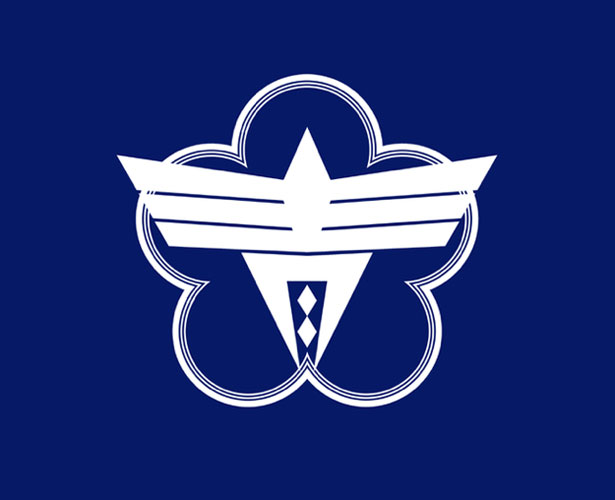
Ome, Tokyo. The emblem of this flag features a stylized kanji in the shape of a flying bird arranged on the shape of an ume flower, which symbolizes active development.
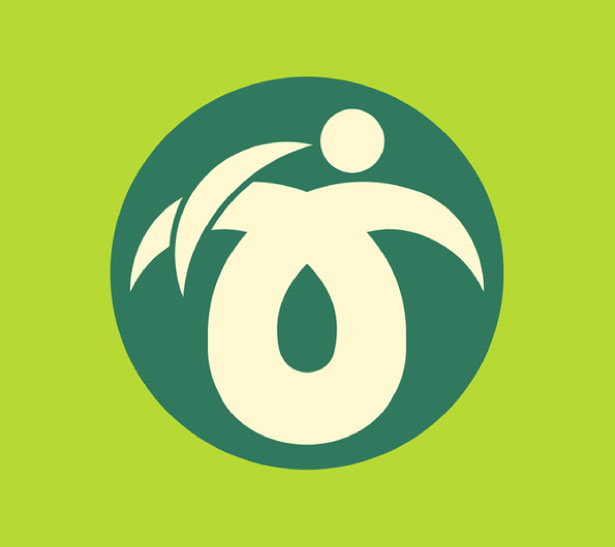
Osaki, Miyagi. This flag displays a hiragana.
Oshu, Iwate. This flag comprises of the letters O and S, as well as a stylized kanji.
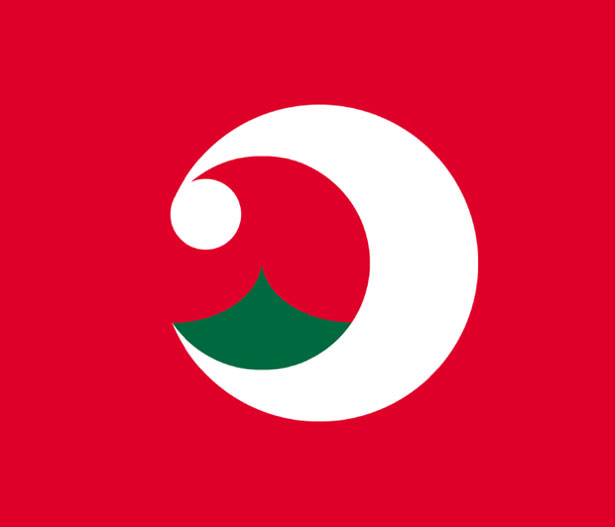
Rishiri, Hokkaido. The white hiragana in this flag represents ocean waves and the green hiragana represents Mount Rishiri.
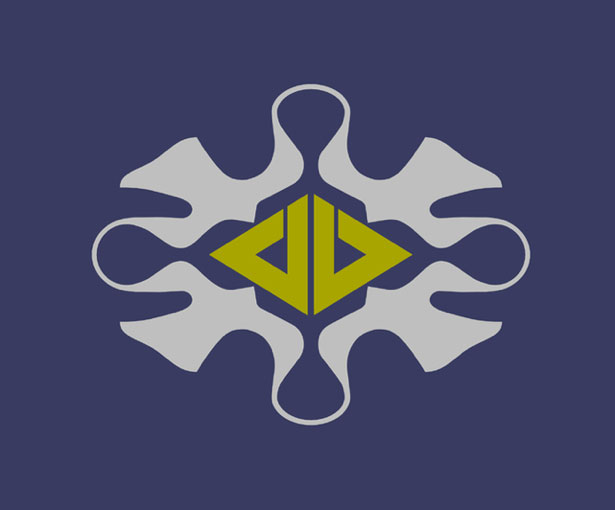
Rumoi, Hokkaido. This flag comprises of a katakana surrounded by the four gulls.
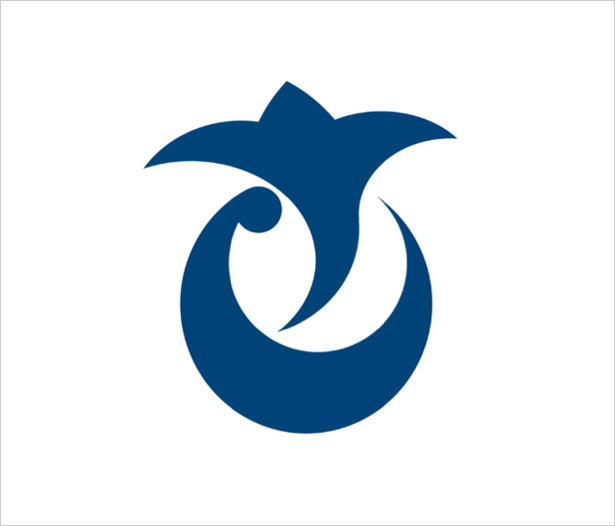
Sakaiminato, Tottori. The hiragana of this flag represents waves in a port.
Sapporo, Hokkaido. The white hexagon represents snow. The circle inside is the the first kanji of Sapporo. It also represents a katakana. The star is Polaris, as well as the katakana.

Shikokuchuo, Ehime. This flag sports the letter 'S' representing expressways.

Shimanto, Kochi. The kanji in this flag represents a flow of the Shimanto River.
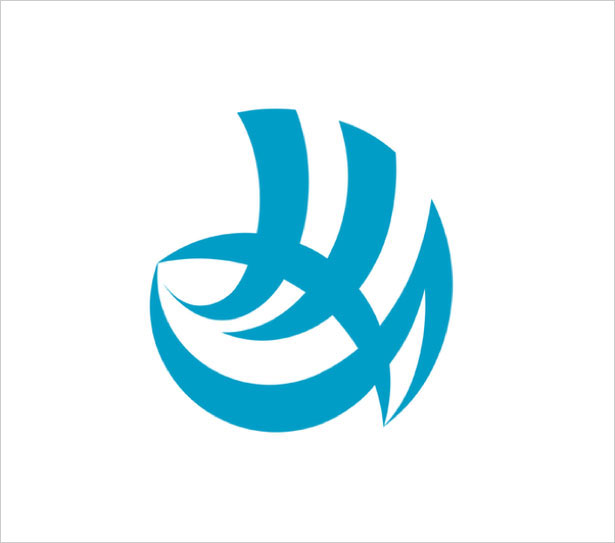
Shimonoseki, Yamaguchi. The stylized hiragana represents a puffer fish.
Shinjuku, Tokyo. The kanji character in a diamond shape is a symbol of steadiness.

Suita, Osaka. The kanji represents a pigeon and the background is the kanji, which represents a flower.
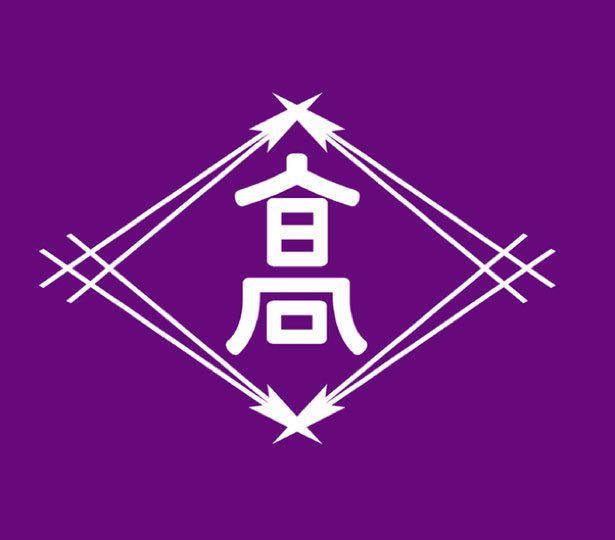
Takamatsu, Kagawa.The center is a stylized kanji surrounded by pine (matsu) leaves.
Toshima, Tokyo. This flag is made up of a chrysanthemum with a stylized kanji inside.

Tosu, Saga. The flag of Tosu features a stylized hiragana.

Tottori, Tottori. The circle and the lozenge of this flag were adopted from the Tottori Domain symbol and the inside is the seal script kanji.
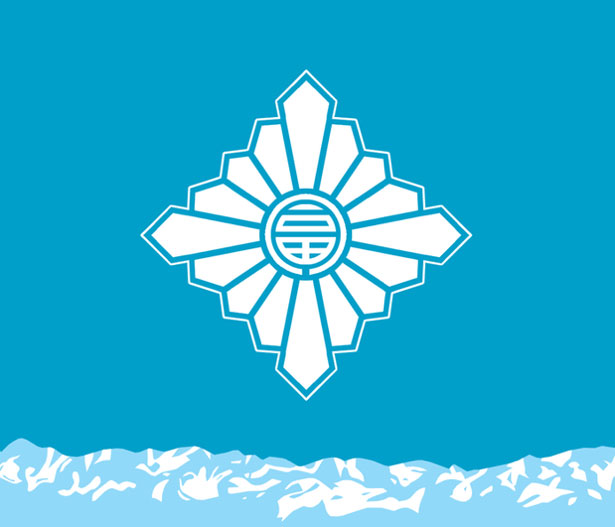
Toyama, Toyama. In this flag, the symbol is based on the one used by the Toyama Domain and the inside is a stylized kanji .
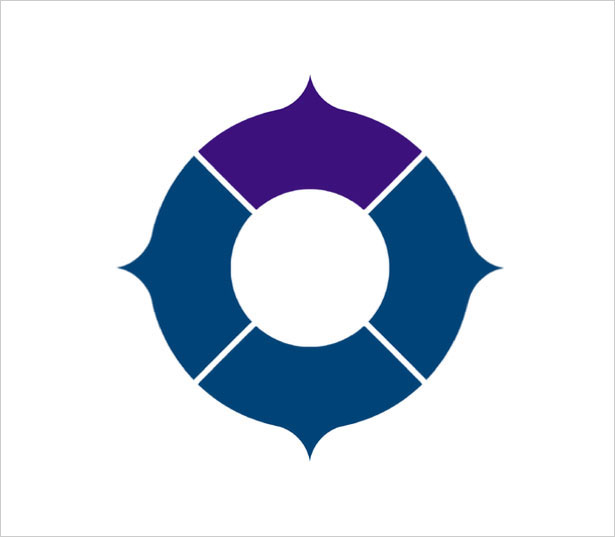
Toyonaka, Osaka. The symbol as a whole represents a kanji.
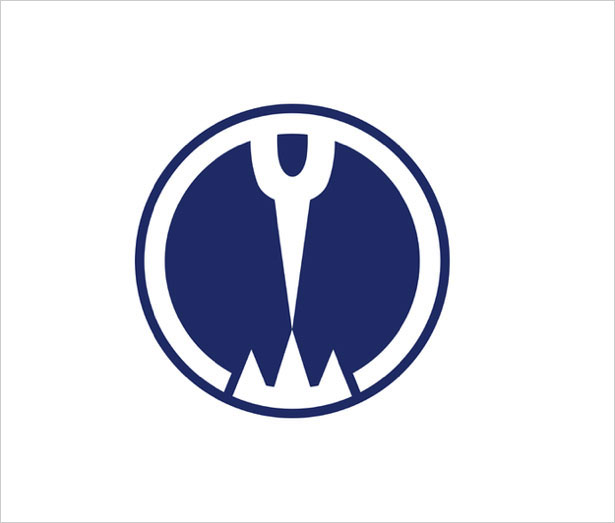
Tsuruoka, Yamagata. The symbol represents a flying crane.

Tsuwano, Shimane. This flag sports the stylized kanji.
Wadomari, Kagoshima. The concept of this flag is a ring representing a mari ball.
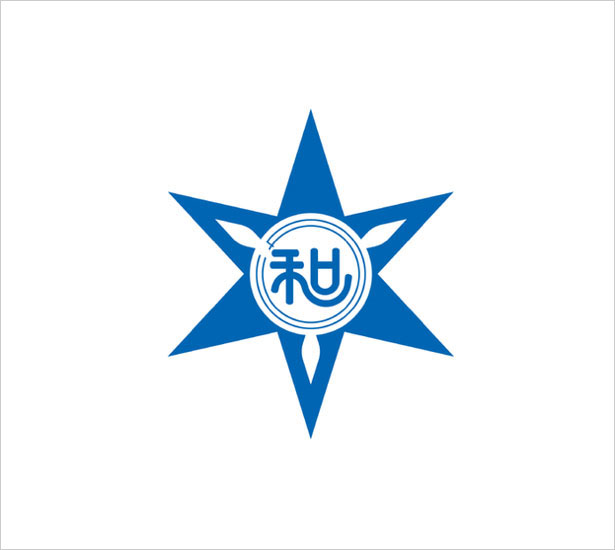
Wakayama, Wakayama. The circle is a stylized katakana and the inside is the kanji, representing mountains surrounding the city.

Wakkanai, Hokkaido. The flag as a whole represents water, and the three letters W stand for "will", "wisdom" and "work". The inside is a steering wheel of a ship.

Warabi, Saitama. This flag shows the katakana inside a ring.
Yamatokoriyama, Nara. The four kanji in the diamond-shaped symbol were taken from the flowery rhombus of the a popular Japanese clan's crest.
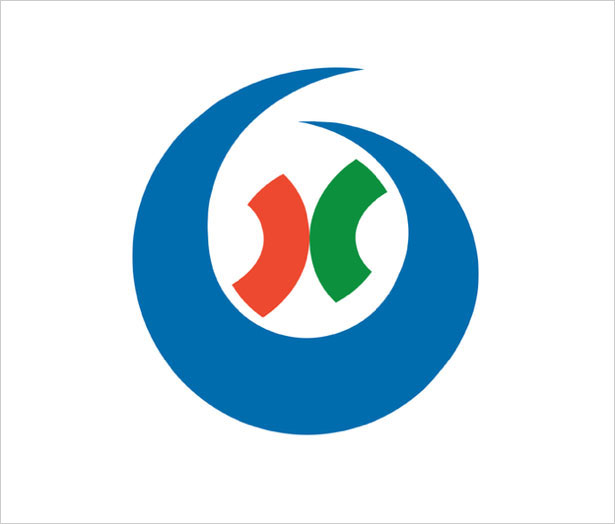
Yatsushiro, Kumamoto. The 6 represents the six municipalities that merged in 2005 to form the current city. The inside is the kanji from the former municipal symbol.
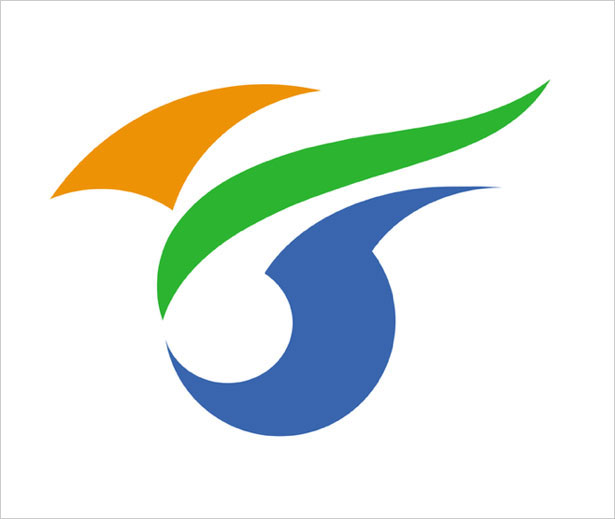
Yokote, Akita.In this flag the stylized hiragana and the letter Y represents Yokote, and the blue hiragana represents the former Hiraka District.

Yonago, Tottori. This flag contains a stylized kanji.

Yoron, Kagoshima. This flag features a stylized kanji.
Yufu, Oita. This flag features a stylized form of the letter 'Y'.
Yurihonjo, Akita.The kanji in this flag represents a lily flower, a lily bulb and a gotenmari, a local varitey of temari ball.

Zama, Kanagawa. This flag features the stylized katakana.
Compiled exclusively for WDD by Zoe Ajiboye.
Which flags were your favorites and why? Please share your opinion with us...














